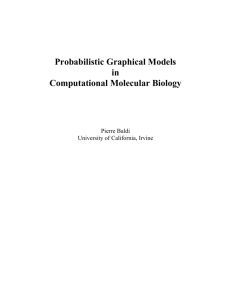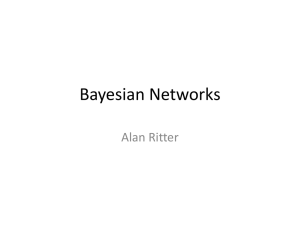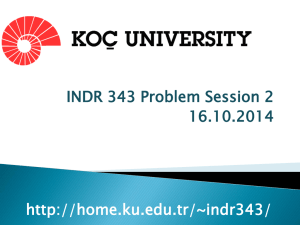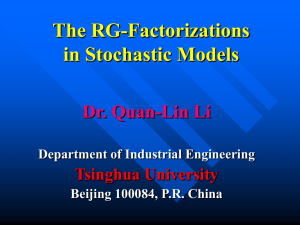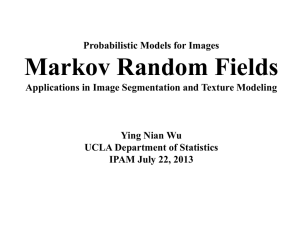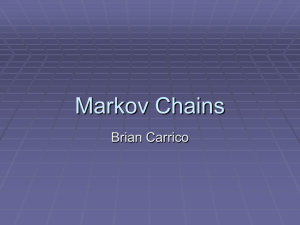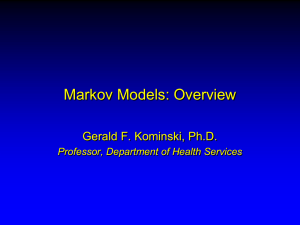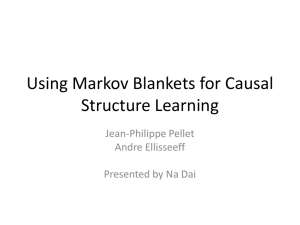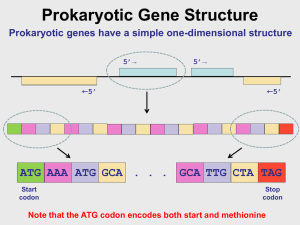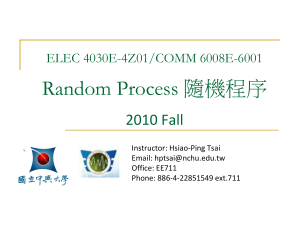Markov Networks
advertisement
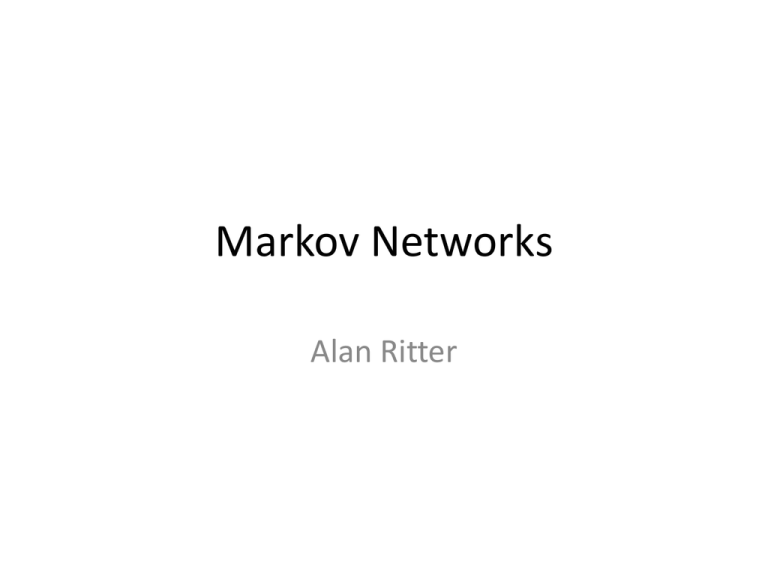
Markov Networks Alan Ritter Markov Networks • Undirected graphical models Smoking Cancer Asthma Cough Potential functions defined over cliques 1 P( x) c ( xc ) Z c Z c ( xc ) x c Smoking Cancer Ф(S,C) False False 4.5 False True 4.5 True False 2.7 True True 4.5 Undirected Graphical Models: Motivation • Terminology: – Directed graphical models = Bayesian Networks – Undirected graphical models = Markov Networks • We just learned about DGMs (Bayes Nets) • For some domains being forced to choose a direction of edges is awkward. • Example: consider modeling an image – Assumption: neighboring pixels are correlated – We could create a DAG model w/ 2D topology 2D Bayesian Network Markov Random Field (Markov Network) UGMs (Bayes Nets) vs DGMs (Markov Nets) • Advantages 1. Symmetric • More natural for certain domains (e.g. spatial or relational data) 2. Discriminative UGMs (A.K.A Conditional Random Fields) work better than discriminative UGMs • Disadvantages 1. Parameters are less interpretable and modular 2. Parameter estimation is computationally more expensive Conditional Independence Properties • Much Simpler than Bayesian Networks – No d-seperation, v-structures, etc… • UGMs define CI via simple graph separation • E.g. if we remove all the evidence nodes from the graph, are there any paths connecting A and B? Markov Blanket • Also Simple – Markov blanket of a node is just the set of it’s immediate neighbors – Don’t need to worry about co-parents Independence Properties G L P p(x) > 0 Pairwise: Local: Global: Converting a Bayesian Network to a Markov Network • Tempting: – Just drop directionality of the edges – But this is clearly incorrect (v-structure) – Introduces incorrect CI statements • Solution: – Add edges between “unmarried” parents – This process is called moralization Example: moralization 2 1 4 5 3 7 6 • Unfortunately, this looses some CI information – Example: Directed vs. Undirected GMs • Q: which has more “expressive power”? • Recall: – G is an I-map of P if: • Now define: – G is a perfect I-map of P if: • Graph can represent all (and only) CIs in P Bayesian Networks and Markov Networks are perfect maps for different sets of distributions Parameterization • No topological ordering on undirected graph • Can’t use the chain rule of probability to represent P(y) • Instead we will use potential functions: – associate potential functions with each maximal clique in the graph – A potential can be any non-negative function • Joint distribution is defined to be proportional to product of clique potentials Parameterization (con’t) • Joint distribution is defined to be proportional to product of clique potentials • Any positive distribution whose CI properties can be represented by an UGM can be represented this way. Hammersly-Clifford Theorem • A positive distribution P(Y) > 0 satisfies the CI properties of an undirected graph G iff P can be represented as a product of factors, one per maximal clique Z is the partition function 1 Example • If P satisfies the conditional independence assumptions of this graph, we can write 2 3 4 5 Pairwise MRF • Potentials don’t need to correspond to maximal cliques • We can also restrict parameterization to edges (or any other cliques) • Pairwise MRF: 1 2 3 4 5 Representing Potential Functions • Can represent as CPTs like we did for Bayesian Networks (DGMs) – But, potentials are not probabilities – Represent relative “compatibility” between various assignments Representing Potential Functions • More general approach: – Represent the log potentials as a linear function of the parameters – Log-linear (maximum entropy) models Log-Linear Models Smoking Cancer Asthma Cough Log-linear model: 1 P( x) exp wi f i ( x) Z i Weight of Feature i Feature i 1 if Smoking Cancer f1 (Smoking, Cancer ) 0 otherwise w1 0.51 Log-Linear models can represent Table CPTs • Consider pairwise MRF where each edge has an associated potential w/ K^2 features: • Then we can convert into a potential function using the weight for each feature: • But, log-linear model is more general – Feature vectors can be arbitrarily designed

